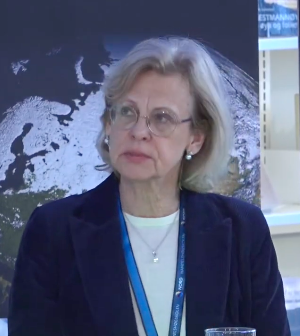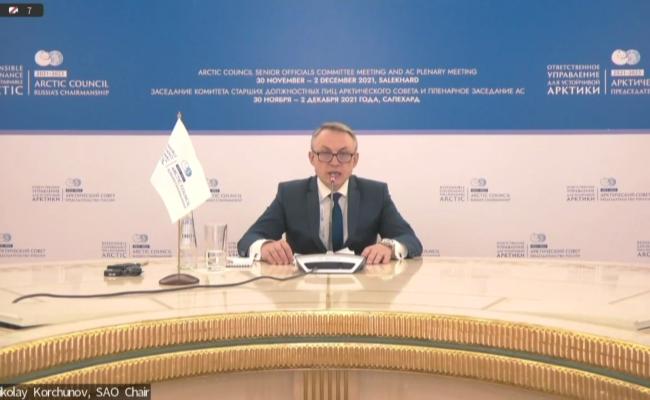Arctic Council Paused: The Search for A Future for Arctic Cooperation Continues
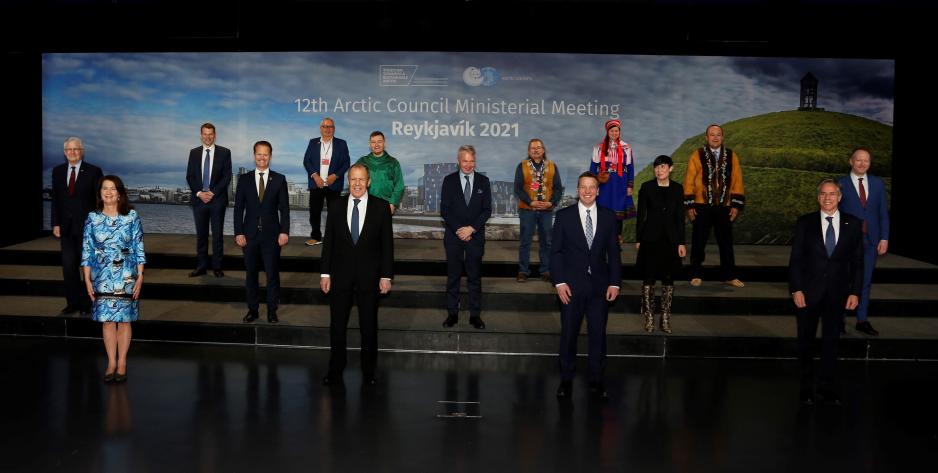
From the Arctic Council Ministerial Meeting in Reykjavik in 2021. (Photo: Gunnar Vigfusson, Icelandic MFA)
“We are focused on making sure that what we do now will not create obstacles to our later returning to normalcy”, Norway’s Arctic Ambassador Morten Høglund says about the pause in Arctic cooperation.
In the beginning of March, the work of the Arctic Council was put on temporarily hold by the seven western Arctic states because of Russia’s war against Ukraine. The pause was introduced by Norway, Sweden, Finland, Denmark, Iceland, Canada and the USA.
The Council is the key forum for international cooperation in the Arctic and Russia holds the Chair for the 2021-2023 period.
The pause applies to all official Council meetings as well as it sub-bodies. It applies pending assessments of and, by implication, decisions about how the work potentially may continue, the “Arctic seven” said in a joint statement.
“These countries still take time to consider what the future of the Council may look like”, Morten Høglund says to High North News. He is Norway’s Arctic Ambassador and Senior Arctic Official at the Arctic Council.
“There is, sadly not much new to say at present. The pause still applies, and we are discussing with our close ones how to take the cooperation onwards. In that respect, there is nothing new to report”, Høglund says.
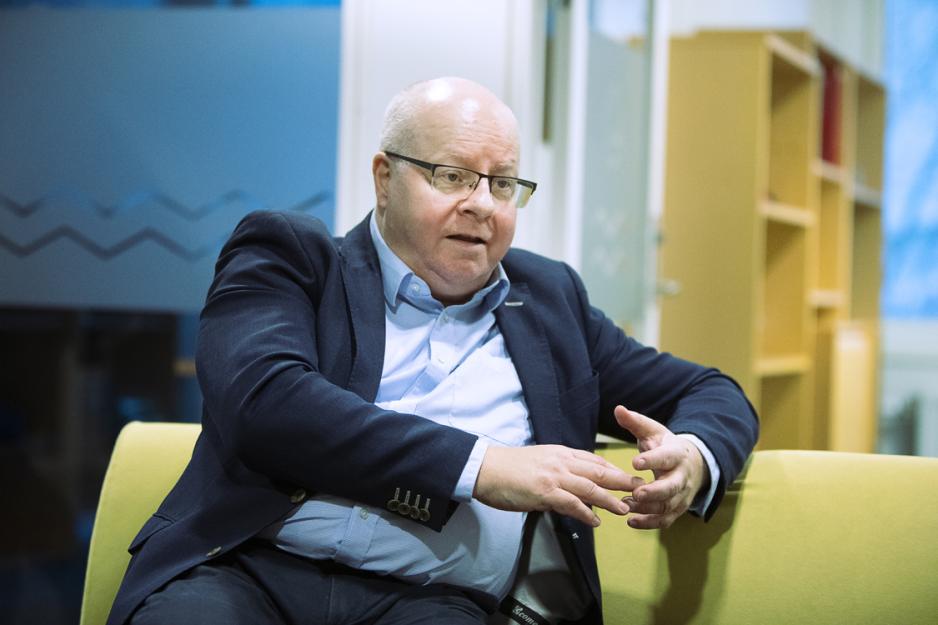
Morten Høglund, Norway’s Arctic Ambassador and Senior Arctic Official at the Arctic Council. (Photo: Hogne Bø Pettersen, the High North Center)
I want to stress that the Council’s work areas are no less important due to the tragic war in Ukraine.
No less important following the war
The Norwegian Arctic ambassador can, however, tell of important focus areas in the ongoing assessment process:
“We are concerned with the fact that there are 128 ongoing projects within the framework of the Council and are focused on how to continue this work, if that is possible in some way or other. The projects are about issues that are significant for people living in the Arctic”, Høglund says and continues:
“I want to stress that the work areas of the Council, such as climate and environment, demography, and sustainable development; are no less important following the tragic war in Ukraine, and that issues in these areas must be taken care of.”
Keeping the door open for future opportunities for regular activity in the Council is also important, he says:
“We are focused on making sure that what we do now will not create obstacles to our later returning to normalcy. However, there is no knowing when the time will be ripe for the Arctic Council to resume its normal business.”
The affiliated scientists can work on their analyses, each on their side, however, there should be no exchange of data or official publishing.
Research dimension
The main work of the Arctic Council takes place in six working groups and one expert group, under which the many projects are organized, involving a series of researchers in the eight member states.
As indicated above, this scientific cooperation under the umbrella of the Council has also been paused.
“Neither the working groups nor the expert group are meeting, and no outreach activity is taking place. The affiliated scientists can work on their analyses, each on their side, however, there should be no exchange of data or official publishing”, Høglund says.
In more detail, this means a halt to scientist interaction within the framework of the Council when it comes to monitoring, analyses and policy recommendations, amongst others when it comes to the vulnerable Arctic environment and the climate.
If we stop collecting data, what will then happen to for instance sea birds?
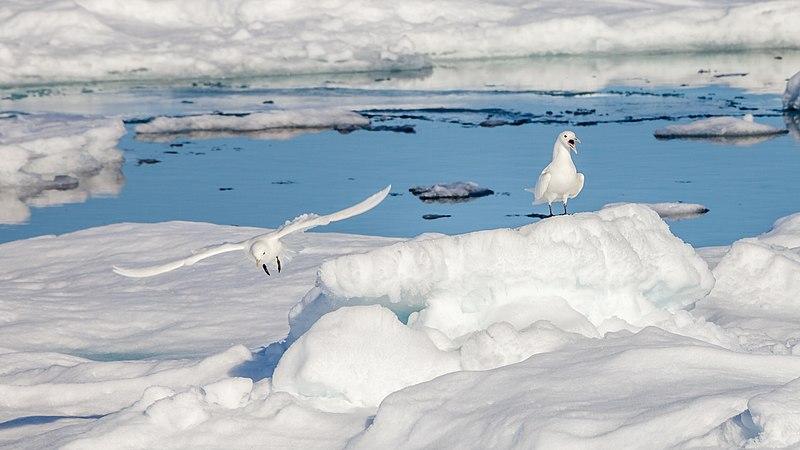
The circumpolar High Arctic Ivory gull is probably amongst the bird species most at risk when it comes to climate change. (Photo: Andreas Weith/Wikimedia Commons)
With an eye to the ripple effects
The pause of the Arctic Council’s work was on the agenda in a panel debate with diplomats from a.o. Norway, Sweden and the USA during the High North Dialogue conference just before Easter.
Birgitte Hygen from the Norwegian MFA then spoke about what consequences the pause to the research cooperation will have for the area of environment and climate. She is Head of Department at the section for the High North, polar issues and resources.
“We talk a lot with the researchers. They tell us about data sets [for environmental change, journ.note] from decades back. If we stop data collection, what will then happen to for instance the sea birds? There are several environmental concerns that we have to take into consideration when we pause this and we must consider how long it can be paused before we will see genuine damages in nature”, Hygen said.
“The challenges we all face in the Arctic will not go away. We need to continue to the highest extent possible a kind of cooperation in the Arctic when it comes to climate as well as maintaining natural resources and the biological situation of the region”, she added.
Hygen also stated that Norway still intends to take over the Council Chair from Russia in May next year.
Sharon Hudson-Dean, Chargé d’Affaires at the US Embassy in Norway and Birgitte Hygen, Head of Division at the Norwegian MFA, Section for the High North, Polar Issues and Resources, during High North Dialogue 2022. (Photo: Trine Jonassen)
In my eyes, the Arctic Council is a gem, and we should maintain its structure
Valuable cooperation structure
At the panel debate, the diplomats pointed out that the Arctic Council and its sub-bodies have been established through many years with big efforts, and that they constitute a structure that has served the Arctic Countries well.
How to preserve this much-cherished forum is a tricky question that is continually being evaluated. That was also the message from the Americans and the Swedes.
“We are in complete agreement with the other member states [western countries, journ.note] regarding taking this temporary break and continue talking with them. The pause sends a clear message to Russia there is no ‘business as usual’ and that its war in Ukraine is fully unacceptable. At the same time, we also hope that the Arctic Council can pick up its work again in the future. This is also largely up to Vladimir Putin, who started this war”, said Sharon Hudson-Dean, Chargé d’Affaires at the US Embassy in Norway.
“The situation is particularly complicated as Russia chairs the Council at present. We are all searching, I believe. In my talks with the foreign minister in Sweden, a key point is that we are in the middle of a war. Seeing where we are going and how to get there is very challenging, and I have no clear analyses or strategy to report. It is hard to envision a thaw in this cooperation this year”, commented Cecilia Björner, Swedish Ambassador to Norway.
“In my eyes, the Arctic Council is a gem, and we should maintain its structure”, Björner added.
The Arctic Council
- The Arctic Council was established in 1996 by Canada, Denmark, Finland, Iceland, Norway, Russia, Sweden and the United States.
- The Council is an inter-state high-level forum promoting cooperation between the Arctic states, Arctic indigenous peoples and other Arctic inhabitants in joint Arctic issues.
- Key areas of cooperation include sustainable development, environmental protection and climate changes, while issues related to military security are explicitly excluded from the Council’s mandate.
- The Council’s main work takes place in six working groups, and its secretariat is located in Tromsø, Norway.
- The eight Arctic states constitute the Council’s Member States and have to agree unanimously on all decisions. Six Arctic indigenous peoples’ organizations hold status of permanent attendees with full consultation rights during decision-making. In addition, 13 non-Arctic states and other kinds of actors hold observer status, including China and the EU.
- Over the years, the council has entered into three legally binding cooperation agreements about Search and Rescue (2011), preparedness cooperation in the case of oil spills in Arctic waters (2013) and research cooperation (2017), respectively.
- Russia holds the Chair for the 2021-2023 period, and Norway will take over after that. The Russian chair is open to resuming cooperation once the time is right, said its leader Nikolay Korchunov when the Council’s activities were paused in early March.
Also read
This article was originally published in Norwegian and has been translated by HNN's Elisabeth Bergquist.


